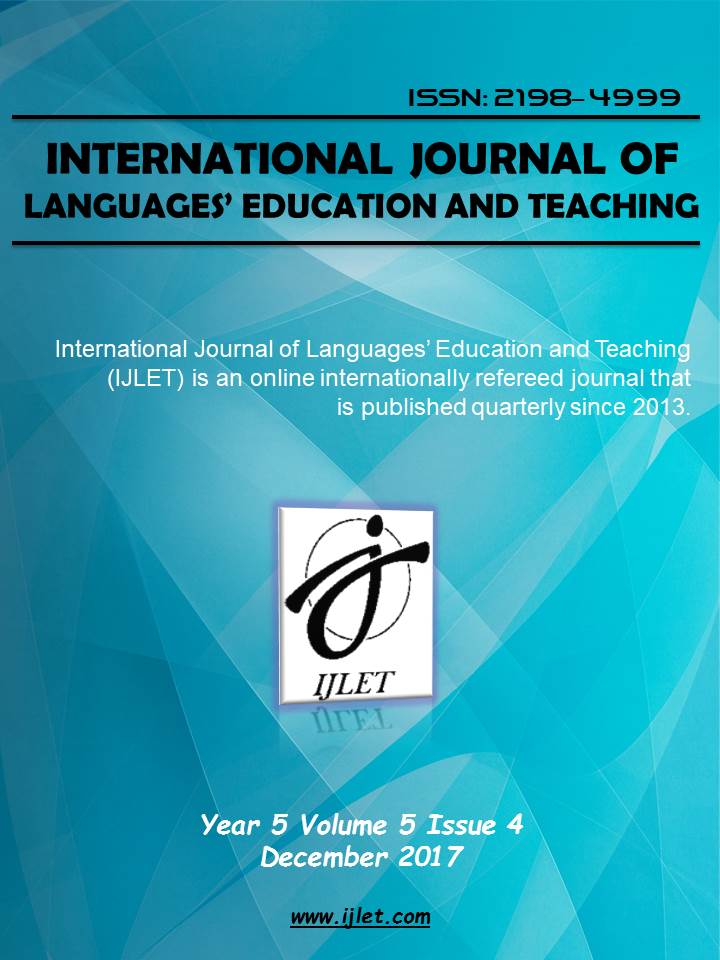Author :
Abstract
Karşılaştırmalı edebiyatın parametrelerinden biri de teoloji ve mitolojiden doğan ortak motif ve imgelerdir. Aralarında doğrudan etkileşimin olmadığı, farklı coğrafya ve kültürlere ait yazarların eserlerinde tespit edilen ortak yapıların en yakın açıklaması bu evrensel değerlerdir. Su imgesi, tüm kültürlerde Eliade’ın ele aldığı şekilde bir arketiptir ve su ile ilgili sosyo-kültürel, psişik değerler, aşağı yukarı aynı karşılıkları içeren bir bağlamsal sözlük sunmaktadır. Su, tüm kültürlerde hem kozmogoniyle hem eskatoloji ile ilgilidir. İmgesel olarak zıt kutuplardaki olguları ihata eder. Var oluşu- yok oluşu; hayat bulmayı- ölümü; coşku ve sevinci- derin melankoliyi anlatan alegorik anlamları potansiyel olarak barındırır. Bu çalışmada iki farklı kültür dünyasından, iki büyük şairin, Fuzûlî, ve Goethe’nin Hz. Muhammed’i konu edinen na’tlerinde yer alan “su” imgelemi irdelenmiştir. Aralarında doğrudan etkileşim olmaksızın Fuzulî’nin “Su Kasidesi” ve Goethe’nin “Mohamed Gesang” şiiri, peygamberi “su” imgesi üzerinden anlatmaktadır. İmgenin yolculuğu açısından oldukça anlamlı açılımlar sunmaktadır. Öte yandan her iki eserde su ile ilgili imgelem ve bağlam son derece farklıdır. Söz konusu yakınlık kadar farklılıklar da bize çok şey söylemektedir. Bu çalışmada Fuzûlî ve Goethe’ye ait manzumeler imgenin dinler tarihi, mitoloji ve arketipsel yolculuğu üzerinden değerlendirilmiştir.
Keywords
Abstract
One of the parameters of comparative literature is the common motifs and images arising from theology and mythology. These universal values are the best explanation of the common structures that are found in the works of authors belonging to different geographies and cultures, with no direct interaction between them. The water image is an archetype in all cultures as Eliade dealt with it, and socio-cultural and psychic values related to water presents a contextual dictionary with approximately the same definitions. Water is concerned with cosmogony and eschatology in all cultures. The water as an image, comprises the facts at the opposite polarities. It potentially contains allegorical meanings that describe the presence-absence; come into life-death; enthusiasm and joy - deep melancholy. In this study, two great poets from two different worlds of culture, Fuzuli, and Goethe's imagination of "water" in the Naats, whose theme is Prophet Muhammad, has been examined. This is quite meaningful in terms of the journey of the image. On the other hand, the imagination and context of water are quite different in both of the works. The difference tells us a lot as much as the similarity. In this study, the poems belonging to Fuzûlî and Goethe were evaluated by the journey of image through the history of religions, mythology and archetypal journey.
Keywords
- AYTAÇ, Gürsel (2003). Karşılaştırmalı Edebiyat Bilimi. İstanbul: Say Yayınları.
- AYTAÇ, Gürsel (2003). Karşılaştırmalı Edebiyat Bilimi. İstanbul: Say Yayınları. AYTAÇ, G. (1990). Edebiyat Yazıları, İstanbul: GündoğanYayınları.
- BACHELARD, Gaston (2006). Su ve Düşler. (Çev. Olcay Kunal), İstanbul:Yapı Kredi Yayınları. DİLÇİN, Cem (2010). Fuzûlî'nin Şiiri Üzerine İncelemeler. Kabalcı Yayınevi.
- ELİADE, Mircae, Berktay, A. (2003). Dinsel İnançlar ve Düşünceler Tarihi, İstanbul: Kabalcı Yayınevi. ELİADE, M. (1994). Ebedi Dönüş Mitosu, Ankara: İmge Kitabevi.
- ELİADE, Mircea, Arslan, L. (2003). Dinler Tarihine Giriş, İstanbul: Kabalcı.
- ERBAŞ, A. (2004). Muhtelif Dinlerde Su Motifi. EKEV Akademi Dergisi,(20), 241-258.FORDHAM, F. (1996) Jung Psikolojisi, (çev. A. Yalçıner), İstanbul: Say Dağıtım. JUNG, C. Gustave (1999). Dört Arketip. DABAA.
- JUNG, C. Gustave (2006). Analitik Psikoloji. Payel Yayınları.
- JUNG, C. G.(1965). Psikoloji ve Din, İstanbul: Oluş Yayınevi. GOETHE, J. W. V. (2012). Doğu Batı Divanı–Garplı Müellifin Şark Divanı-,(Çev. Senail Özkan). İstanbul: Ötüken Yayınları.
- MOMMSEN, Katharina (2015) Goethe ve Dünya Kültürleri, (Çev. Senail Özkan). İstanbul: Ötüken Yayınları.
- MOMMSEN, Katharina (2012) Goethe ve İslam, İstanbul: Ötüken Yayınları. PALA, İskender (2000) Divan Şiiri Sözlüğü, Ötüken Yayınları.
- PALA, İskender (2008) Dört Güzeller:Toprak, Su, Hava, Ateş, İstanbul: Kapı Yay.
- ROUSSEAU, A. M.,Pichois, C. (1994). Karşılaştırmalı Edebiyat. (Çev. Mehmet Yazgan), İstanbul: MEB SCHİMMEL, Annemarie,(1954) “Dinde Sembolün Fonksiyonu Nedir?”, A.Ü. İlahiyat
- TARLAN, Ali, N. (2001). Fuzûlî Divanı Şerhi, Ankara: Akçağ Yay.
- ÜZGÖR, Tâhir (2014). Su Redifleri Şiirler ve Fuzûlî'nin Su Kasidesi'nin Kompozisyonuna Dâir, İlmî Araştırmalar: Dil, Edebiyat, Tarih İncelemeleri, (9), 239-248.
